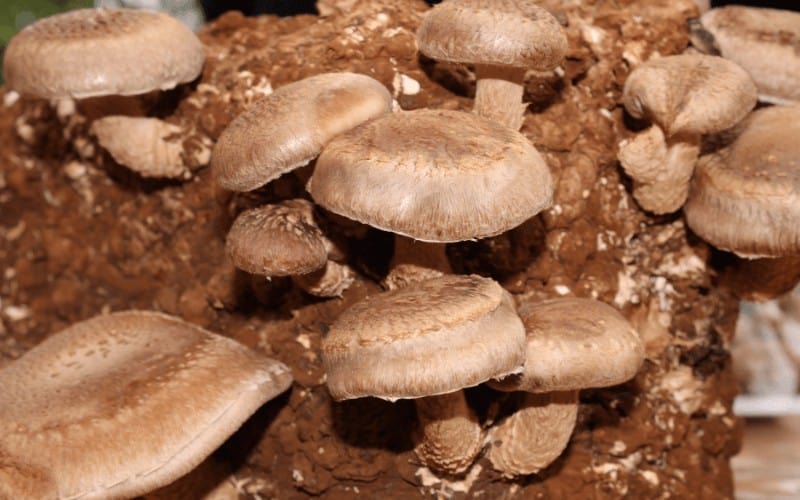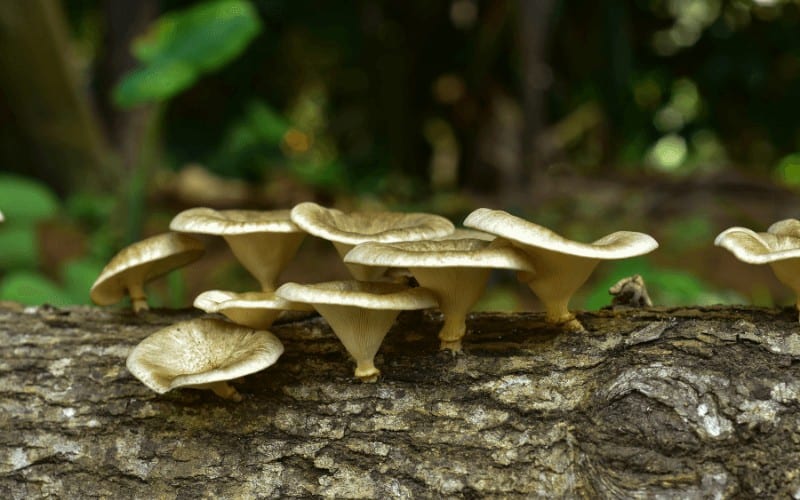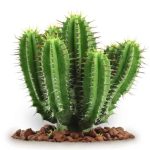Is mushroom a vegetable? Or is it a fruit? A lot of people have asked this question over and again without getting the best answer they seek.
On a quick note, mushroom typically is not a vegetable, neither is it a fruit. They are a type of fungi - but most times, they are classified as vegetables.
However, a lot of people eat mushrooms and enjoy adding them to their daily meals. This now triggers the question, what exactly are mushrooms?
Table of Contents
What Are Mushrooms?
A mushroom or toadstool is a fleshy body of a fungus, typically seen above the ground, on a food source, or on top of the soil.
It is typically a fungus; however, mushrooms are of different types, of which there is particularly, a type, know as "Edible Mushroom."
Some types of mushrooms are poisonous and can cause death. But, if you were asking about edible mushrooms, they are particularly nutritious, rich in protein, selenium, and potassium.
Furthermore, several studies have shown that mushrooms have so many nutrients to offer, and those nutrients are mostly what you get from veggies; hence, so many nutrition blogs and experts do classify mushroom as a vegetable.
Is Mushroom A Vegetable?

Botanically, Mushrooms are classified as fungi because they do not produce leaves, fruits, and do not even need light.
A plant typically needs light and would definitely produce leaves (flowers), but mushrooms don’t. With all that is said so far, it is obvious that mushrooms are neither vegetables nor fruits.
However, they surprisingly contain a lot of nutrients needed by the human body to stay healthy and strong - talking about niacin, pantothenic acid, selenium, copper, riboflavin, dietary fiber, vitamin D, calcium, and much more.
It's quite surprising how this strange plant tends to deliver all those nutrients, but then, it does.
What Makes Mushroom Different From Vegetables?
Vegetables are considered plants, and plants contain chlorophyll. Also, plants grow through the popular photosynthesis method - using sunlight to produce food.
In contrast, mushrooms, like other fungi, do not need sunlight; they grow from nutrients drawn from decaying plants, food, or animal matter, and they lack chlorophyll.
How Do Mushrooms Grow?
Unlike fruits and veggies, mushrooms grow from spots and not seeds. They grow in cool, humid environments.
Mushrooms grow without being planted by anybody, they just need the right environment, which is usually a damp, decaying, surface of food, wood, or just about anything.
Types of Mushrooms

Surprisingly, there are many types of mushrooms, around 25 in number, and not all of them are actually safe to eat.
However, the various types of mushrooms are arranged and grouped into four (4) species/categories: saprotrophic, mycorrhizal, parasitic, and endophytic. Deriving the four species of mushrooms was based on how the organism feeds.
1. Saprotrophs
This type of mushrooms thrives on decays; they are also called decomposers. Decaying wood, animals, and plants serve as food for saprotrophs to grow. Mushrooms in this category include:
- Morels (Morchella angusticeps)
- Cremini (Agaricus bisporus)
- Black Trumpet (Craterellus cornucopioides)
- Shiitake (Lentinula edodes)
- White Button (Agaricus bisporus)
- Oyster (Pleurotus ostreatus)
- Chicken of the Woods (Laetiporus sulphureus)
- Maitake (Grifola frondosa)
- Turkey Tail (Trametes Versicolor)
- Yellow Houseplant Mushroom (Leucocoprinus Birnbaum)
- Giant Puffball (Calvatia gigantea)
- Enokitake (Flammulina velutipes)
- Shaggy Mane (Coprinus comatus)
- Reishi (Ganoderma lucidum)
2. Mycorrhizae
This species of mushrooms are usually found growing on tree roots or stems. They either weave into the tree’s root cells or wrap around the roots; thus, adding more moisture and other nutrients to the host tree.
However, while they provide the host tree with nutrients, they collect glucose in return, and this is what they survive on. Examples include:
- Chanterelles (Cantharellus cibarius)
- Porcini (Boletus edulis)
- Caesar's Mushroom (Amanita caesarea)
- Tuber magnatum
- Matsutake (Tricholoma matsutake)
3. Parasites
Just as the name implies, this type of mushrooms feeds on weaker plants. They typically infect the host plant and kill it gradually.
You may not notice these types f mushrooms until they mature and might have eventually killed the host plant. Examples are:
- Honey Fungus (Armillaria mellea)
- Caterpillar Fungus (Cordyceps Sinensis)
- Lion's Mane (Hericium Erinaceus)
- Chaga (Inonotus obliquus)
4. Endophytes
Endophytic can be planted and they also grow outside. They grow on plants too; they draw nutrients from the host plant - without killing it - this species of mushroom is still being researched at the University of Sydney.
Related Posts:
- How To Grow Portobello Mushrooms
- How To Grow Gourmet Mushrooms
- How to Get Rid Of Toadstools
- How Long Does It Take to Revive A Dead Plant?
- How Do You Get Rid Of White Fungus On Palm Trees?
Conclusion
Is mushroom a vegetable? The simple answer is NO. Mushrooms are fungi the grow on damp surfaces. They are quite nutritious, but not all of them are safe to eat.
There are thousands of types of mushrooms, and they provide different nutrients to the body. Hopefully, this article answered your query and also provided relatively handy information for your perusal.




